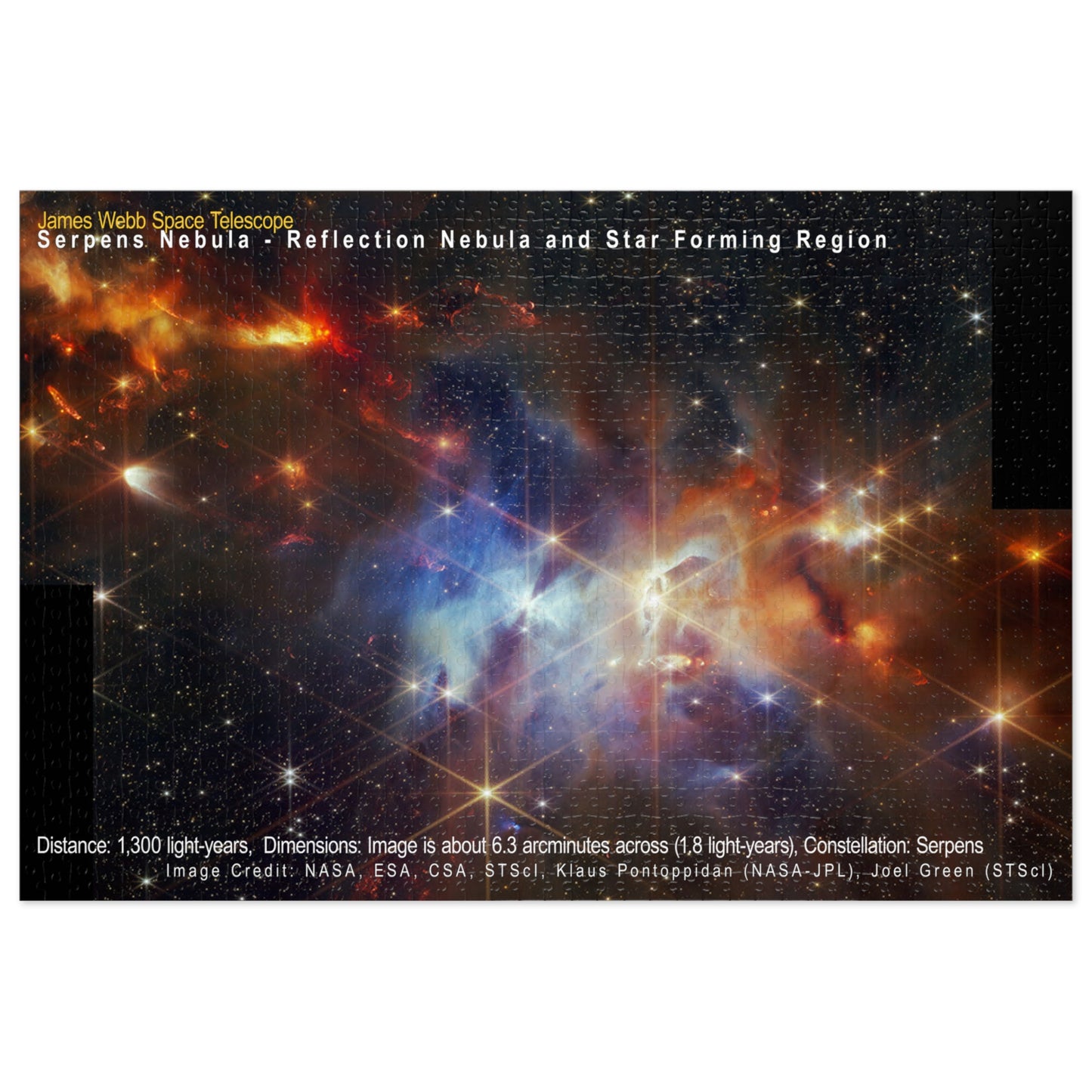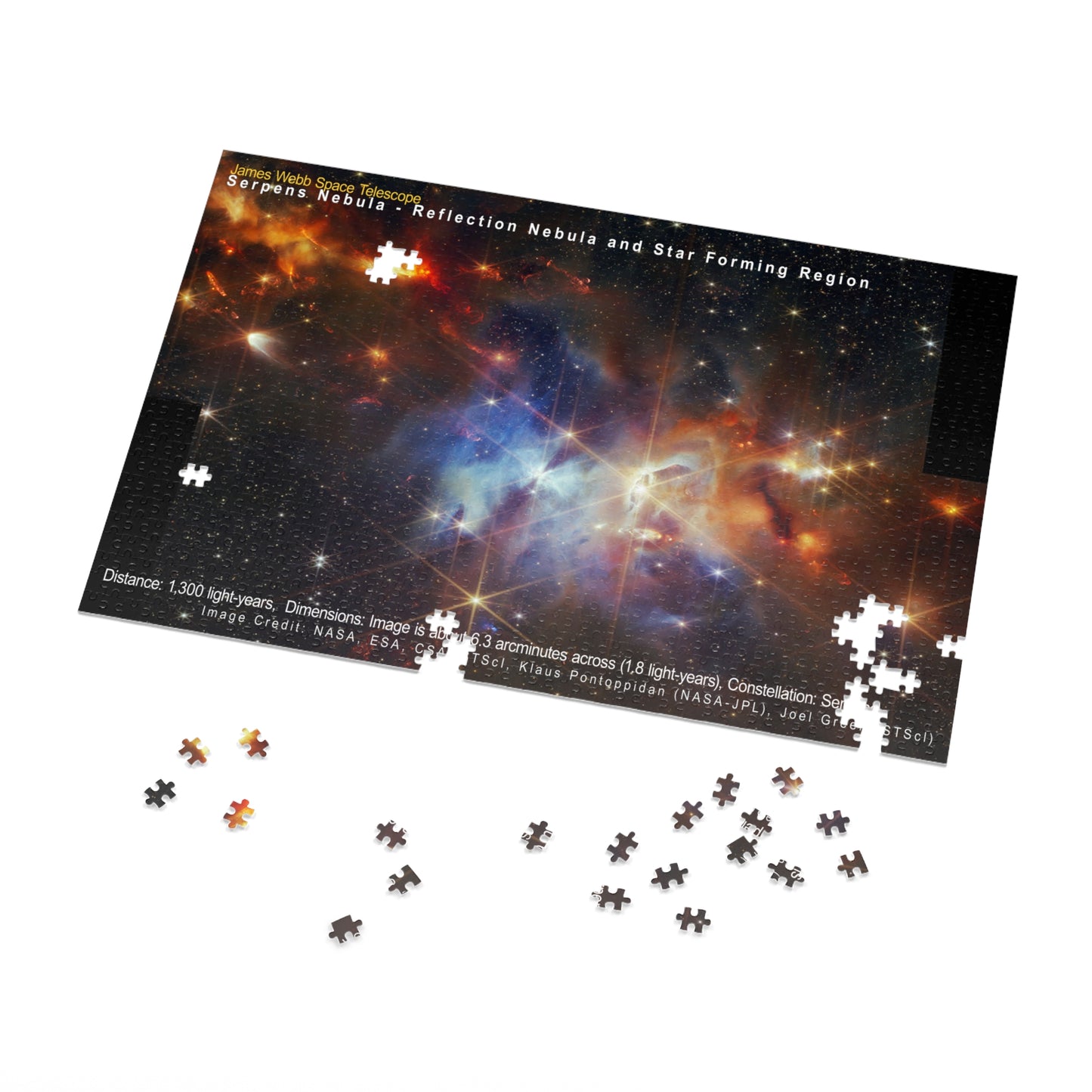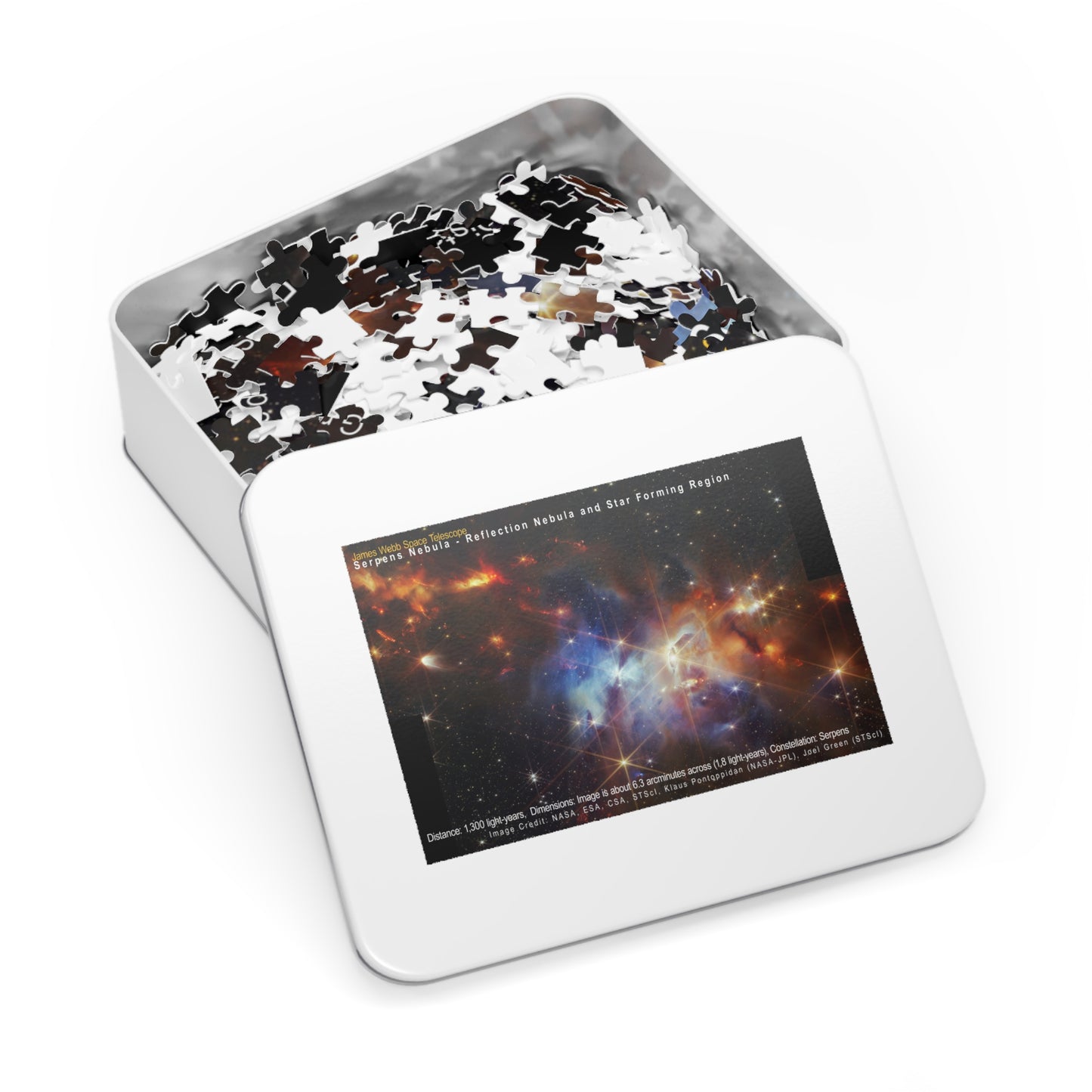Serpens Nebula, Jigsaw Puzzle
Serpens Nebula, Jigsaw Puzzle
Couldn't load pickup availability
Unveiling the Mysteries of the Cosmos: Dive Deep with Our Galaxy Puzzles!
Embark on a challenging and rewarding journey with stunning images.
A Universe of Wonder: Lose yourself in breathtaking views of distant galaxies, nebulae, and star clusters captured by the most powerful telescope ever built.
A Challenge Worthy of Any Stargazer: Choose from various puzzles to test your skills.
Sharpen Your Mind: As you piece together the cosmos, you'll develop problem-solving abilities, logical reasoning, and concentration.
Become an astronaut of the mind and explore the universe from the comfort of your home!
Serpens Nebula:
In this image of the Serpens Nebula from the Near-Infrared Camera (NIRCam) on NASA's James Webb Space Telescope, astronomers found a grouping of aligned protostellar outflows within one small region (the top left corner). In the Webb image, these jets are indicated by bright, clumpy streaks that appear red, which are shockwaves from the jet impacting the surrounding gas and dust.
The Serpens Nebula, located 1,300 light-years from Earth, is home to a particularly dense cluster of newly forming stars (~100,000 years old), some of which will eventually grow to the mass of our Sun.
This region has been home to other coincidental discoveries, including the flapping "Bat Shadow," which earned its name when 2020 data from NASA's Hubble Space Telescope revealed a shadow from a star's planet-forming disk to flap, or shift. This feature is visible at the center of the Webb image.
To the right of the "Bat Shadow" lies another intriguing feature—an eye-shaped crevice, which appears as if a star is bursting through. However, astronomers say looks may be deceiving here. This could just be gases of different densities layered on top of one another, similar to what is seen in the famous Pillars of Creation.
And to the right of that, an extremely dark patch could be a similar occurrence. This gas and dust are so dense in comparison to the rest of the region that no near-infrared light is able to pass through.
Constellation Serpens
Distance 1,300 light-years
Dimensions Image is about 6.3 arcminutes across (1.8 light-years)
Exposure Dates 26 April 2023, 12 May 2023
Image: NASA, ESA, CSA, STScI, Klaus Pontoppidan (NASA-JPL), Joel Green (STScI)
Share






